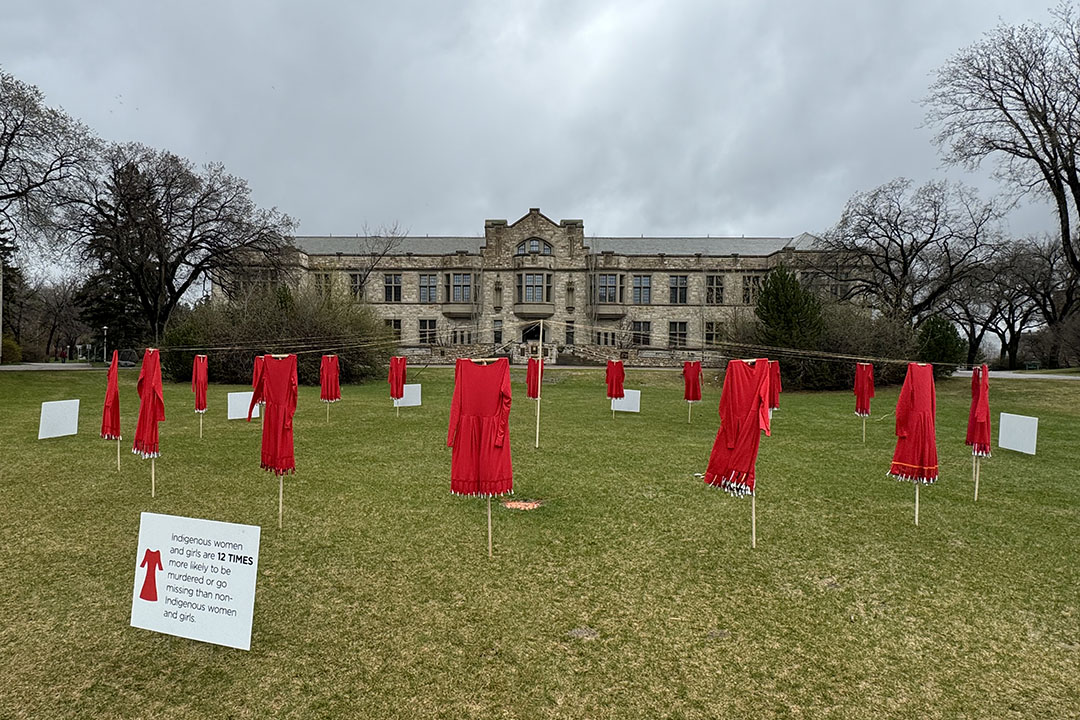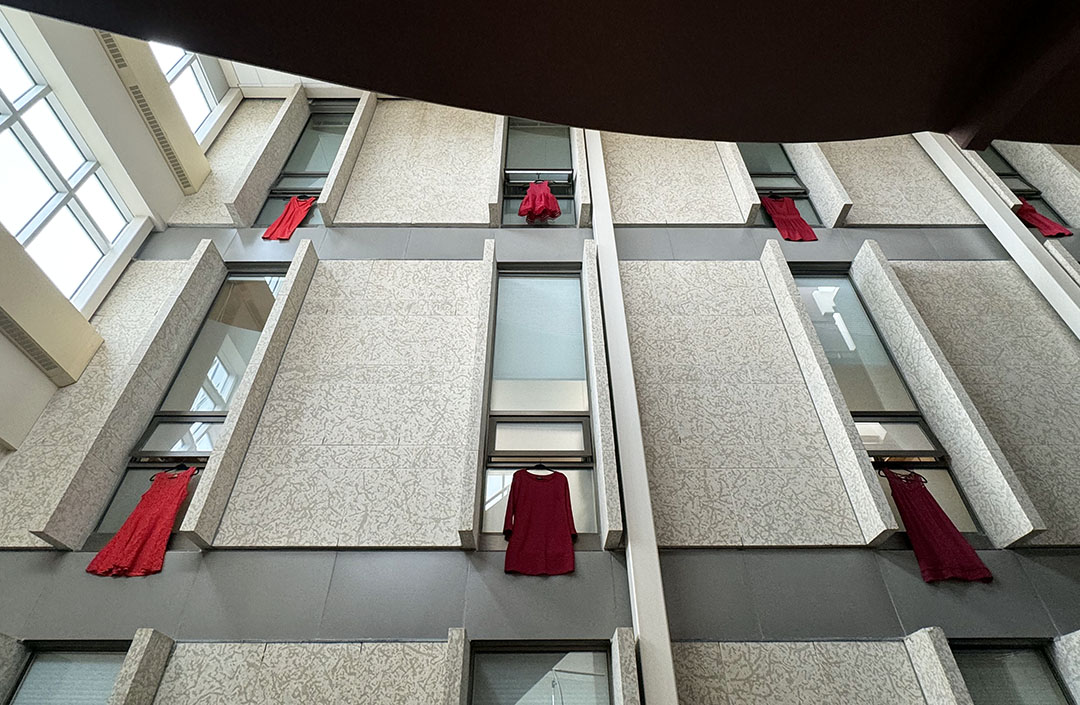
USask community marks Red Dress Day
Faculty, staff, and students were invited to an event to honour missing and murdered Indigenous women, girls, and 2SLGBTQQIA+ people.
By Ashley DopkoOn May 3, 2024, the University of Saskatchewan (USask) community came together to mark the day of observance for Missing and Murdered Indigenous women, girls, and 2SLGBTQQIA+ people across Canada.
“Our role as a post-secondary institution is to educate and encourage dialogue around historical and current events in an effort to broaden people’s understanding,” said Dr. Angela Jaime (PhD), Vice-Provost, Indigenous Engagement. “We want to create safe and accountable spaces so that we can have conversations about hard things. If we don’t do this people live in isolation without fully understanding what’s going on.”
USask’s Red Dress Day activities were hosted by the Office of the Vice-Provost Indigenous Engagement (OVPIE) and saw students, staff and faculty gathered in the Bowl. Many participants had the opportunity to try their hand at traditional beading by making red dress pins with the help of Beading with Aunties – Jusinda Rosenkerr, Indigenous Wellness Counsellor and Indigenous artist and Implementation Coordinator for OVPIE, Vanessa Hyggen who regularly host beading events on campus for Indigenous students, staff and faculty. These activities offered an opportunity to learn, share, and build community.
“Having people learn how to bead creates a space to dialogue,” said Jaime. “If we’re sitting in a circle beading we’re able to share and gain a better understanding of the atrocities that have happened and the prevention that needs to continue. Hands busy, mind free to engage in the conversation.”

In the final report of the National Inquiry into Missing and Murdered Indigenous Women and Girls many calls for justice are made, including one directed to educators. Elementary, secondary, and post-secondary institutions are asked to provide awareness about the missing and murdered, addressing the root causes of the violence they experience.
“This is an issue that affects our whole community, we need to work towards a future where Indigenous women, girls and two-spirit people feel safe and valued,” said Hyggen. “For me, we come together for remembrance, to raise awareness and to demand justice and action.”
The report includes the voices of more than 2,380 family members, survivors of violence, experts, and Knowledge Keepers, and delivers 231 Calls for Justice directed at governments, institutions, and all Canadians. Some of the Calls for Justice are featured on outdoor banners placed around The Bowl on the main USask campus.
Red Dress Day is observed annually on May 5. The day was inspired by Métis artist Jamie Black’s REDress Project, an art installation that featured empty red dresses in various environments to represent missing and murdered Indigenous women.
It’s a powerful symbol that also appeared in various renditions around the USask campus.
“The colour red represents our the lifeblood that connects us and is also the colour that the spirits can see. We are hoping that those who are murdered and missing will see it, and that this is a way to help them come home,” said Jaime.
“The sound of the jingles on the red dresses, which are a symbol of sobriety and spiritual connection, shudder in the wind is really beautiful. It’s another way to help lead the spirits home. We’ve put 20 dresses in a circle with sinew connecting them together, hanging from the sinew there are 231 little red dresses representing the 231 Calls to Justice written on them by participants of the project. Those Calls to Justice are another image of our commitment to eliminating this epidemic on nationally, internationally and globally – Indigenous women and girls should not be 19 times more likely to be murdered and missing. It should be zero.”


